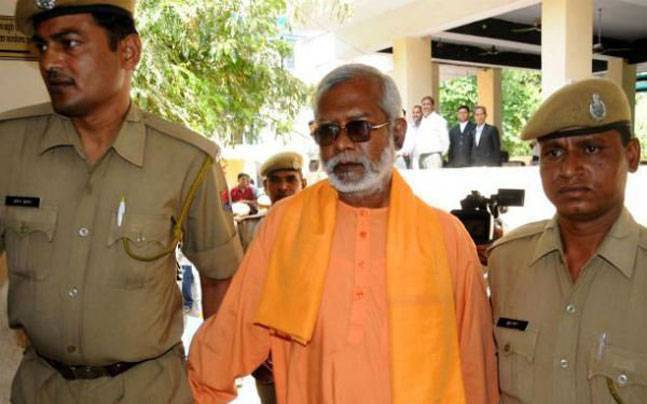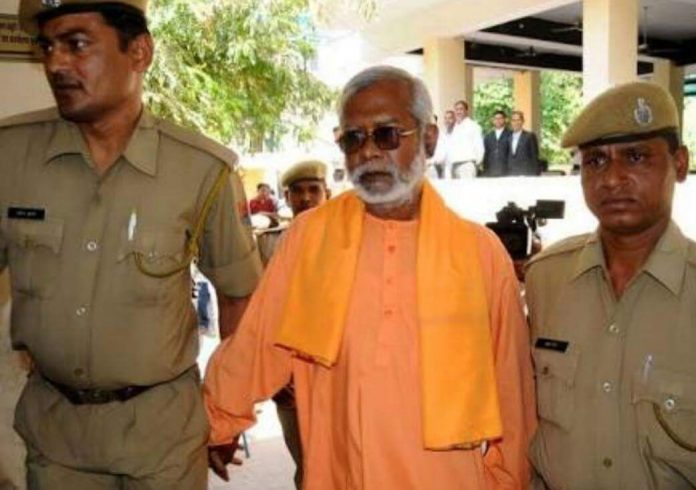By Riaz Ahamed for Twocircles.net
The special court of the National Investigation Agency (NIA) that was hearing the Ajmer Dargah blast case pronounced its judgement on March 8. As expected, the main accused in the case Swami Aseemananda was acquitted of all the charges in the case. In addition to Swami Aseemananda, NIA special court judge Dinesh Gupta also acquitted six others from the case. The acquittal of police officials from fake encounter cases and Hindutva extremists from the bomb blast cases has become a random occurrence since the electoral victory of Bharatiya Janata Party (BJP) in the 2014 Parliamentary elections.
The sentencing of Devendra Gupta, Baavesh Patel and Sunil Joshi in the Ajmer case is of little solace. The mysterious killing of Sunil Joshi on December 29, 2007 and the recent acquittal of Sadhvi Pragya Singh and seven others in the case is a different story.

Powerful bombs ripped the famous Ajmer dargah on October 11, 2007 at 6.14 p.m. and claimed the lives of three innocents and injured 15 others. It was the holy month of Ramadan in which Muslims fast from dawn to dusk and the bombs went off just a few minutes before iftar, the time to break the day-long fast. As usual, the blame of the bomb blast was placed on the Muslim community but a fair and unbiased investigation brought out the hand of Hindutva terrorism in this case. The case that was initially investigated by the Rajasthan Anti-Terrorism Squad (ATS) was later handed over to NIA on April 6, 2011.
The NIA framed charges against 13 persons. While Sunil Joshi was killed, Sandeep Dange, Ramachandra Kalsangra and Suresh Nair were proclaimed absconders. While the judgement of the case has been pronounced, the status of these three absconders still remains unclear.
The Central Bureau of Investigation (CBI) arrested Swami Aseemananda, who was accused in various cases on November 19, 2010. Naba Kumar Sarkar alias Swami Aseemananda gave his confessional statement to Judge Deepak Das of Tis Hazari court on December 18, 2010. This confessional statement created ripples at that time. Swami Aseemananda clearly stated that he was aware that he could be awarded death sentence because of this statement, but still he wished to give the confessional statement. Aseemananda gave his confessional statement under Section 164 of CrPC and was fully aware that the same could be used against him. Judge Deepak Das did not record the statement at once. He explained the full consequences of giving the confessional statement to Aseemananda and gave him two days time to think about it.
Swami Aseemananda said in detail his first meeting with Sadhvi Pragya Singh and Sunil Joshi, the secret conspiracy meetings, choosing the targets, arranging people to plant the bombs, the financial arrangements and other things in the statement. The true face of the Hindutva fascists, who often make a hue and cry on nationalism, was brought out by this statement. The role of Hindutva extremists in various bomb blasts across the nation, which include, but not limited to, Malegaon, Modassa, Hyderabad Mecca Masjid, Samjhauta Express and Ajmer Dargah was exposed.
How could the NIA special court judge neglect such strong evidence? The public prosecutor Aswini Kumar Sharma also expressed his astonishment over the same issue. Even though the prosecution have decided to appeal against the acquittal of Aseemananda, how far this is going to be put in action has to be seen.
The top brass of RSS and BJP are well aware that Aseemananda will spill the beans if he is convicted in the case. Aseemananda has given the details on the role of Indresh Kumar, the national executive council member of RSS in his confessional statement. The NIA had even mentioned in a charge sheet that Indresh Kumar was present in a meeting where the conspiracy to plant the bombs was hatched. But the NIA neither took Indresh Kumar into their custody nor was he interrogated. The Sangh Parivar has sacrificed a few arrows while the masters were saved.
The change in tone of the NIA and CBI in dealing with the cases of Hindutva extremists can be clearly felt. The BJP which termed the CBI as ‘a caged parrot’ during the previous UPA regime has now got two caged parrots. The public prosecutor in the Malegaon case Rohini Salian said a few months back that the NIA officers had informed her to go soft in the case. The Modassa case was closed in May 2015 citing lack of evidence. Aseemananda was granted bail in the Samjhauta express blasé case in August 2014. The Home Ministry instructed the NIA not to file an appeal against this bail order.
RSS has openly welcomed the acquittal of Swami Aseemanada in the Ajmer blast case. Susantha Sarkar, brother of Aseemananda hailed the verdict as a victory for Hindutva and has accepted that the legal expenses for the case were borne by BJP. The RSS while welcoming the acquittal of Aseemananda fails to understand that two of its pracharaks, Sunil Joshi and Devendra Gupta, were convicted in the same case. This is the first instance in which the RSS pracharaks were declared convicts in a major bomb blast case. The special court has awarded life imprisonment for Bhaavesh Patel and Devendra Gupta. The role of RSS terrorists in the bomb blast cases has thus been proved.
A day before the acquittal of Swami Aseemananda, a trial court at Gadchiroli awarded life sentence for Jawaharlal Nehru University (JNU) professor Saibaba. Prof. Saibaba, JNU student Hem Mishra, former journalist Prasanth Rahi and Gadchiroli residents Mahesh Dirke and Pandu Narade were awarded life imprisonment for their alleged relation with Maoists and waging war against the nation. Vijay Dirke, another accused in the case was awarded ten years imprisonment.
The prosecution presented 23 witnesses in the case and of these, 22 were policemen. The sentence was given based on the statements given by these witnesses and electronic evidence. No other evidence was presented in the court apart from the electronic and video evidence. Prof. Saibaba who was given life sentence is suffering from 90% disability. The Maharashtra police arrested him in 2014 and he was granted six months bail by the Bombay High Court after fourteen months of imprisonment. The Supreme Court later granted him bail in April last year. Prof. Saibaba was not arrested but was rather abducted by cops of various agencies while he was on his way to his residence from the college. The cops later took him to Nagpur without providing any information to his family.
The courts that were earlier reluctant to grant bail to a person suffering from 90% disability has been awarded life sentence on flimsy ground. Rebecca John, the advocate for Saibaba has said that they will appeal against the trial court’s verdict. Activists point to the earlier cases against Prof. SAR Geelani and Dr. Binayak Sen who were sentenced on similar charges by the lower courts, which were subsequently turned over by the apex court.
The courts which grant bail and even acquit Hindutva extremists, in spite of credible evidence are awarding life sentence for people like Prof. Saibaba who were charged on weak evidence. This shows that double standard is still followed in the judiciary. The existence of double standard in the judiciary, which serve as the last resort for the aggrieved, will only lead to more crimes. It’s the duty of all responsible citizens to fight against the double standard in the judiciary. Failing to do so will only lead to the continuance of this practice, which is not good for a healthy democracy.
The writer is the Associate Editor of Puthiya Vidial, a Tamil fortnightly


